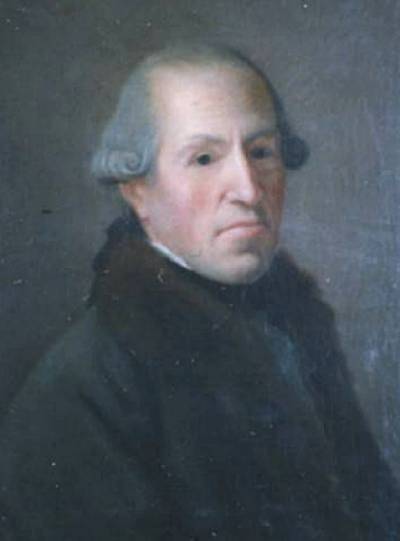
| ANNE WANNER'S Textiles in History / cotton industry in Switzerland |
| Cotton fabrics in the
eastern part of Switzerland in the 18th century. Article dedicated to Krishna Riboud, in: CIETA-Bulletin No 80, 2003, page 68 - 74, by Anne Wanner-JeanRichard |
| page 2 of 5 back - next |
| The Zellweger Family: |
| At the beginning of
18th c. the linen trade decreased and the
weavers tried to find new ways to survive. They now used cotton
on the same looms and in the same humid
basements which were very favorable for weaving fine
fabrics. The production of cotton fabrics is mentioned
from 1746 on, and in the period from 1750 to 1783 (the
end of the British/French colonial war) the weavers from
Eastern Switzerland developed great skill in the
production of cotton fabrics. Several San Gall historians
write in their publications that the Appenzell weavers
were the most skilled cotton weavers of Europe in the
middle of 18th c. It has not yet been possible to
analise the plain cotton fabrics as documented examples
are missing. But the correspondence of some Swiss
merchants has been preserved: the letters of Mathias
Sulser mention the transport of raw cotton in the years
1750 to 1757, and some letters written by weavers from
1759 are known as well. Most importantly, there is the
correspondence of the trading company Zellweger from 1762
and also from 1779 to 1787. |
there until his mothers
death in 1740. He married in 1754 and then returned to
Lyons. In 1767 Zellweger established a new company in
Genoa, Italy and in 1790 he left the Lyons business. When
Johannes died in Trogen, Appenzell, in 1802, one of the
richest Swiss merchants had passed away, and he left a
fortune of around three million guilders. The Zellweger company was a pure trading and dealing company and they did not manufacture any goods. They first dealt in linen, and the rise of the company began with the cotton trade in 1726. The first years are only slightly documented, but the voluminous trade correspondence gives a lot of information: there was trading in linen fabrics, in raw cotton, in cotton yarn, in Muslins and also in coffee and colonial goods. Levant raw cotton was bought in Venice; it came from Cyprus, Smyrna, Macedonia. From 1763 onwards raw cotton from West India was also bought in Amsterdam. This material was destined for Sulser at Azmoos (Switzerland) which were Zellweger's best clients. Zellweger had connections with France, Italy, Spain, USA and the French West Indies. From 1762-80 the company sold cotton fabrics woven in Herisau, Appenzell to a great number of cloth printers such as those in Neuchâtel, Mulhouse and Lörrach. In 1785 there was a prohibition against importing cotton fabrics into France, and trading became more difficult. This was one of the reasons why Zellweger founded the company in Genoa, Italy and left Lyons in 1790. |
| Johannes Zellweger, born in Lyons 1723, married in Lyons in 1740, he left Lyons in 1790, he died in 1802 in Trogen, Appenzell |
|
2 members of the
Zellweger family: |
|
| Introduction | Zellweger | Muslins | Tambour | Literature |
| content | Last revised July 29, 2004 |